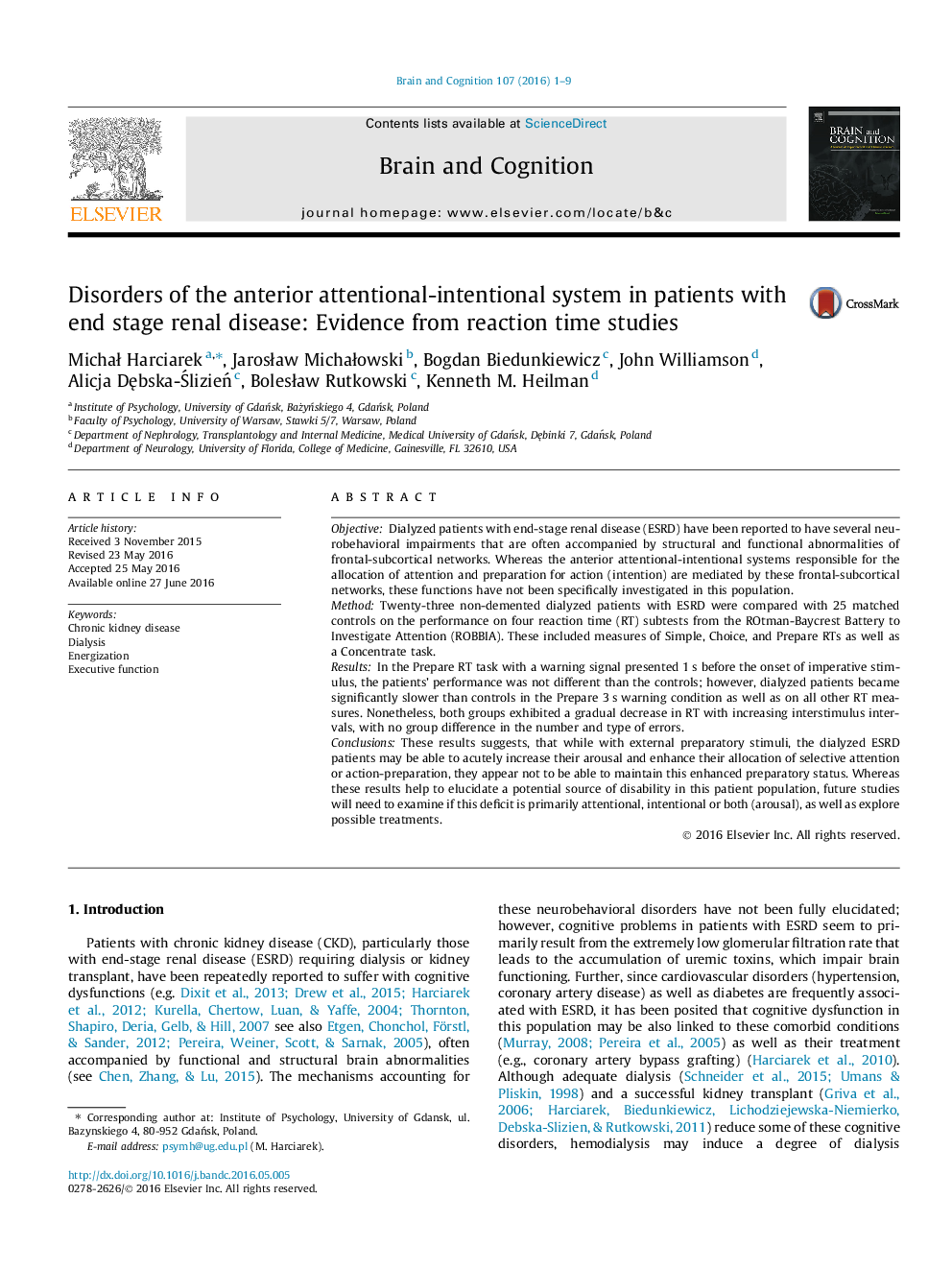| کد مقاله | کد نشریه | سال انتشار | مقاله انگلیسی | نسخه تمام متن |
|---|---|---|---|---|
| 924036 | 1473964 | 2016 | 9 صفحه PDF | دانلود رایگان |
• The anterior attentional system of dialyzed patients is selectively impaired.
• Dialyzed patients have impaired energization but not monitoring or task setting.
• Preparatory stimuli can enhance dialyzed patients’ allocation of attention.
• Dialyzed patients appear not to be able to maintain their preparatory status.
• Renal disease/dialysis may predominantly affect superior medial frontal regions.
ObjectiveDialyzed patients with end-stage renal disease (ESRD) have been reported to have several neurobehavioral impairments that are often accompanied by structural and functional abnormalities of frontal-subcortical networks. Whereas the anterior attentional-intentional systems responsible for the allocation of attention and preparation for action (intention) are mediated by these frontal-subcortical networks, these functions have not been specifically investigated in this population.MethodTwenty-three non-demented dialyzed patients with ESRD were compared with 25 matched controls on the performance on four reaction time (RT) subtests from the ROtman-Baycrest Battery to Investigate Attention (ROBBIA). These included measures of Simple, Choice, and Prepare RTs as well as a Concentrate task.ResultsIn the Prepare RT task with a warning signal presented 1 s before the onset of imperative stimulus, the patients’ performance was not different than the controls; however, dialyzed patients became significantly slower than controls in the Prepare 3 s warning condition as well as on all other RT measures. Nonetheless, both groups exhibited a gradual decrease in RT with increasing interstimulus intervals, with no group difference in the number and type of errors.ConclusionsThese results suggests, that while with external preparatory stimuli, the dialyzed ESRD patients may be able to acutely increase their arousal and enhance their allocation of selective attention or action-preparation, they appear not to be able to maintain this enhanced preparatory status. Whereas these results help to elucidate a potential source of disability in this patient population, future studies will need to examine if this deficit is primarily attentional, intentional or both (arousal), as well as explore possible treatments.
Journal: Brain and Cognition - Volume 107, August 2016, Pages 1–9
